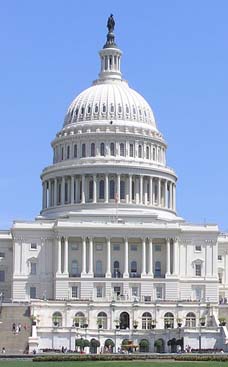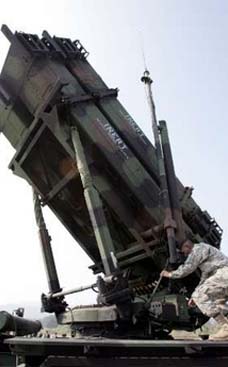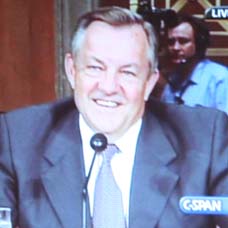2004.01.01: January 1, 2004: Headlines: Safety: Crisis Management: SAFETI: Crisis Management: The Emergency Action Plan (EAP) Training for Peace Corps Volunteers and the three levels of alert (standfast, consolidation, evacuation)
Peace Corps Online:
Directory:
Guinea:
Peace Corps Guinea :
Peace Corps Guinea: Newest Stories:
2007.01.28: January 28, 2007: Headlines: COS - Guinea: COS - Mali: Safety: Peace corps Pressd Release: Peace Corps Volunteers in Guinea Are Safe:
2004.01.01: January 1, 2004: Headlines: Safety: Crisis Management: SAFETI: Crisis Management: The Emergency Action Plan (EAP) Training for Peace Corps Volunteers and the three levels of alert (standfast, consolidation, evacuation)
Crisis Management: The Emergency Action Plan (EAP) Training for Peace Corps Volunteers and the three levels of alert (standfast, consolidation, evacuation)

What are the three stages of alert? Standfast - stay at site, keep low profile; Consolidation - go to pre-arranged assembly point, contact PC office, prepare for withdrawal; Evacuation - leave assembly point, proceed to safe haven.
Crisis Management: The Emergency Action Plan (EAP) Training for Peace Corps Volunteers and the three levels of alert (standfast, consolidation, evacuation)
We are all painfully aware that so much information comes across our desks that we hardly have time to give it a cursory glance. When we consider the sheer volume of written material heaped upon Trainees at PST it’s a wonder they can slog through it all during their two year Volunteer service! Somewhere among this onslaught of paper the Emergency Action Plan is distributed to Trainees, most of whom will file it away without a second thought. And therein lies the rub. Without some orientation to the EAP, it will remain forgotten gathering dust in a box beneath the Volunteer’s bed. In several recent evacuation debriefings, Volunteers have emphasized the need to be familiar with the EAP before the crisis occurs. Many posts have included some orientation to the EAP as a session in Pre-Service Training. A possible module for PST presentation, gleaned from many discussions with Volunteers, trainers and staff, follows:
Learning Objectives
By the end of this module the participants will be able to:
1. Define standfast, consolidation and evacuation stages;
2. Identify the consolidation point for their prospective site;
3. Describe at least two routes from their prospective site to their consolidation ?assembly points;
4. List the contents of an evacuation bag;
5. Provide specific emergency contact information at their prospective sites.
Key Learning Points
* The EAP is an important resource for every Volunteer;
* Every Volunteer has the responsibility to ensure their emergency contact information is accurate and up-to-date;
* The EAP is no substitute for common sense and good judgment;
Session I 45 minutes
A week prior to the scheduled Trainee site visits, distribute post EAP to Trainees instructing them to read through it and prepare to answer questions at a future session. A day or two before the scheduled visit convene "EAP Orientation" session, an open-book discussion. Ask participants the following questions:
What is the purpose of the EAP?
* To prepare for, mitigate, respond to and recover from a crisis situation.
What emergencies are identified in the EAP?
* medical emergency, family crisis, political instability, civil unrest, natural disaster.
What are the stages of alert? Please define them.
* standfast - impending emergency, stay at site, keep low profile
* consolidation - go to pre-arranged assembly point, contact PC office, prepare for withdrawal
* evacuation - leave assembly point, proceed to safe haven
Using the EAP as a reference have each participant find her/his prospective site and consolidation assembly point on a large country map. Which participants share the same assembly points? What information about the assembly point can the participants derive from studying the EAP and map? What are two possible routes from site to assembly point? What other information would they want to have? Where/to whom would they go to get it?
Distribute blank site locator forms to participants.
Why are site locator forms important?
* provide emergency contact information
* include detailed map in case of emergency transportation
* lists local support resources (clinic, police, other PCVs)
* incorporated into the EAP communication network
Emphasize the importance of keeping the site locator forms up-to-date and remind participants that it is their responsibility to do so.
Ask for any additional questions.
Session II 45 minutes
During the pre-site visit sessions incorporate the following exercises into the Trainees’ visit activities.
If the site locator forms have already been completed for prospective sites, provide each Trainee with a copy instructing them to verify:
* identity of contact persons and means of contact (tel., radio, etc.)
* accuracy of map
* location of clinic, police post, school, other support facilities
* standard housing criteria (doors, windows, locks, burglar bars, etc.)
If site locator forms have not been completed for prospective sites, provide the Trainees with blank forms and have them take a first cut at gathering the information listed above.
Debriefing. When Trainees return from site visit, gather feedback from them on the tasks outlined above.
o Which tasks proved difficult? Why?
o What did you learn that surprised you?
o Which training needs do you now feel need more attention?
Exercise. The participants will need their EAP and site locator forms during the exercise. Distribute scenario and list of questions (you may find it more appropriate to develop your own scenario).
Scenario. Imagine that you are now a PCV at your site. While you are preparing for a workshop scheduled to begin the next day (your first "big" activity), a local driver arrives at your site with a letter from the Peace Corps office that instructs you to immediately travel to your consolidation point.
Using your EAP and site locator form as references, take 15 minutes to describe how you would proceed. List at least 5 tasks.
o conduct property inventory
o pack emergency evacuation bag (list contents)
o inform counterpart to postpone workshop
o inform host family
o lock house arrange for security during absence
o travel immediately to consolidation assembly point (describe route)
o notify Peace Corps immediately upon arrival at consolidation assembly point
Ask participants to report out. List tasks on flip chart.
Ask for any additional questions.
Links to Related Topics (Tags):
Headlines: January, 2004; Safety and Security of Volunteers
When this story was posted in December 2006, this was on the front page of PCOL:





Peace Corps Online The Independent News Forum serving Returned Peace Corps Volunteers
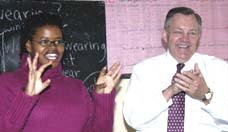 | Ron Tschetter in Morocco and Jordan
On his first official trip since being confirmed as Peace Corps Director, Ron Tschetter (shown at left with PCV Tia Tucker) is on a ten day trip to Morocco and Jordan. Traveling with his wife (Both are RPCVs.), Tschetter met with volunteers in Morocco working in environment, youth development, health, and small business development. He began his trip to Jordan by meeting with His Majesty King Abdullah II and Her Majesty Queen Rania Al Abdullah and discussed expanding the program there in the near future. |
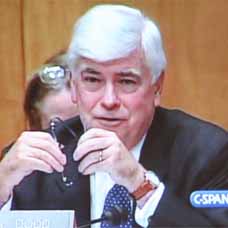 | Chris Dodd's Vision for the Peace Corps
Senator Chris Dodd (RPCV Dominican Republic) spoke at the ceremony for this year's Shriver Award and elaborated on issues he raised at Ron Tschetter's hearings. Dodd plans to introduce legislation that may include: setting aside a portion of Peace Corps' budget as seed money for demonstration projects and third goal activities (after adjusting the annual budget upward to accommodate the added expense), more volunteer input into Peace Corps operations, removing medical, healthcare and tax impediments that discourage older volunteers, providing more transparency in the medical screening and appeals process, a more comprehensive health safety net for recently-returned volunteers, and authorizing volunteers to accept, under certain circumstances, private donations to support their development projects. He plans to circulate draft legislation for review to members of the Peace Corps community and welcomes RPCV comments. |
 | He served with honor
One year ago, Staff Sgt. Robert J. Paul (RPCV Kenya) carried on an ongoing dialog on this website on the military and the peace corps and his role as a member of a Civil Affairs Team in Iraq and Afghanistan. We have just received a report that Sargeant Paul has been killed by a car bomb in Kabul. Words cannot express our feeling of loss for this tremendous injury to the entire RPCV community. Most of us didn't know him personally but we knew him from his words. Our thoughts go out to his family and friends. He was one of ours and he served with honor. |
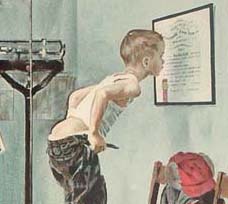 | Peace Corps' Screening and Medical Clearance
The purpose of Peace Corps' screening and medical clearance process is to ensure safe accommodation for applicants and minimize undue risk exposure for volunteers to allow PCVS to complete their service without compromising their entry health status. To further these goals, PCOL has obtained a copy of the Peace Corps Screening Guidelines Manual through the Freedom of Information Act (FOIA) and has posted it in the "Peace Corps Library." Applicants and Medical Professionals (especially those who have already served as volunteers) are urged to review the guidelines and leave their comments and suggestions. Then read the story of one RPCV's journey through medical screening and his suggestions for changes to the process. |
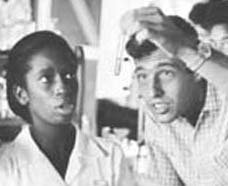 | The Peace Corps is "fashionable" again
The LA Times says that "the Peace Corps is booming again and "It's hard to know exactly what's behind the resurgence." PCOL Comment: Since the founding of the Peace Corps 45 years ago, Americans have answered Kennedy's call: "Ask not what your country can do for you--ask what you can do for your country. My fellow citizens of the world: ask not what America will do for you, but what together we can do for the freedom of man." Over 182,000 have served. Another 200,000 have applied and been unable to serve because of lack of Congressional funding. The Peace Corps has never gone out of fashion. It's Congress that hasn't been keeping pace. |
 | PCOL readership increases 100%
Monthly readership on "Peace Corps Online" has increased in the past twelve months to 350,000 visitors - over eleven thousand every day - a 100% increase since this time last year. Thanks again, RPCVs and Friends of the Peace Corps, for making PCOL your source of information for the Peace Corps community. And thanks for supporting the Peace Corps Library and History of the Peace Corps. Stay tuned, the best is yet to come. |
 | History of the Peace Corps
PCOL is proud to announce that Phase One of the "History of the Peace Corps" is now available online. This installment includes over 5,000 pages of primary source documents from the archives of the Peace Corps including every issue of "Peace Corps News," "Peace Corps Times," "Peace Corps Volunteer," "Action Update," and every annual report of the Peace Corps to Congress since 1961. "Ask Not" is an ongoing project. Read how you can help. |
Read the stories and leave your comments.

Some postings on Peace Corps Online are provided to the individual members of this group without permission of the copyright owner for the non-profit purposes of criticism, comment, education, scholarship, and research under the "Fair Use" provisions of U.S. Government copyright laws and they may not be distributed further without permission of the copyright owner. Peace Corps Online does not vouch for the accuracy of the content of the postings, which is the sole responsibility of the copyright holder.
Story Source: SAFETI
This story has been posted in the following forums: : Headlines; Safety; Crisis Management
PCOL35396
26







